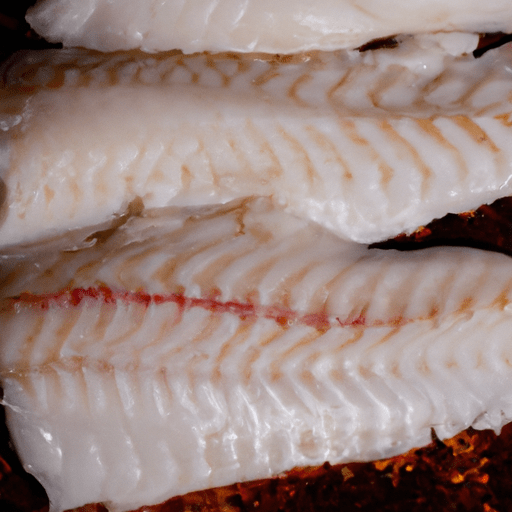The Delightful World of Cod Fillet: A Versatile and Nutritious Catch
When it comes to seafood, few things are as versatile and delicious as the humble cod fillet. With a mild, flaky texture and a delicate yet distinct flavor, cod fillet has become a favorite ingredient in many kitchens around the world. Let’s dive into the delightful world of cod fillet and explore its taste, common uses in cooking, nutritional value, as well as some interesting history and facts.
The Taste of Cod Fillet
Cod fillet boasts a mild and slightly sweet flavor that is often compared to a combination of halibut and haddock. Its meaty texture is flaky, allowing it to easily soak up the flavors it’s cooked with. This versatility makes cod fillet a fantastic canvas for various seasonings and cooking methods, making it a staple in both traditional and modern culinary creations.
Common Uses in Cooking
Cod fillet is incredibly adaptable and used in a multitude of dishes worldwide. Here are a few popular ways to enjoy this delightful fish:
Baked Cod: Baking cod fillet allows it to retain moisture while developing a golden crust. This method is ideal for showcasing the fish’s natural flavor, allowing you to savor every succulent bite.
Fish and Chips: One of the most beloved dishes across the globe, fish and chips often feature cod fillet as the star ingredient. The flaky fish, combined with crispy batter, is a match made in culinary heaven.
Pan-seared Cod: Pan-searing cod fillet creates a lovely caramelized exterior while keeping the inside moist and tender. This technique pairs exceptionally well with citrusy and herb-infused sauces.
Fish Tacos: Cod fillet is a popular choice for fish tacos, providing a mild and flaky base that complements the vibrant flavors of various toppings, such as fresh salsa, avocado, and tangy slaw.
Nutritional Value
Beyond its delectable taste and versatility, cod fillet is also a nutritional powerhouse. Here are some key nutritional highlights of this fish:
- Protein: Cod fillet is an excellent source of lean protein, essential for building and repairing body tissues.
- Omega-3 Fatty Acids: This fish is rich in omega-3 fatty acids, which play a vital role in heart health and brain function.
- Vitamins and Minerals: Cod fillet provides important vitamins and minerals such as vitamin B12, vitamin D, potassium, and selenium.
Fascinating History and Facts
Cod fillet has an intriguing history that spans centuries. Some captivating facts about this beloved fish include:
- Cod Fishing: Cod fishing has been a significant industry and cultural tradition in countries like Norway, Iceland, and Portugal for centuries. It has played an essential role in the economies and diets of these regions.
- Cod Stocks: Unfortunately, overfishing has led to significant declines in cod stocks in certain areas. As a result, sustainable fishing practices are crucial to preserving this valuable fish for future generations.
- Salted Cod: Salted cod, often known as bacalhau, has been a popular preservation method for centuries. This technique has preserved cod fillet without refrigeration, enabling people to enjoy this fish even in the absence of fresh catch.
Conclusion
Cod fillet’s delicate flavor, versatility in the kitchen, and impressive nutritional profile make it a prized ingredient in countless cuisines worldwide. From being a vital part of traditional dishes to starring in contemporary creations, its appeal is ever-growing. So, whether you bake it, pan-sear it, or enjoy it as fish and chips, cod fillet is a treasure trove of culinary possibilities that will continue to delight both home cooks and professional chefs alike.
Origin:
- Cod is a species of fish that is native to the cold waters of the North Atlantic Ocean.
- It is found along the coasts of North America, Europe, and Greenland.
Common uses:
- Cod fillets are commonly used in cooking due to their mild flavor and flaky texture.
- They can be pan-fried, baked, grilled, or steamed.
- Cod is often used in dishes such as fish and chips, fish stews, and fish tacos.
- It is also a popular choice for fish sandwiches and fish cakes.
Nutritional benefits:
- Cod is a lean source of protein and is low in fat.
- It contains essential nutrients such as vitamins B12 and B6, potassium, and selenium.
- It is a good source of omega-3 fatty acids, which are beneficial for heart health.
- Cod also provides phosphorus, magnesium, and vitamin D.
Unique properties:
- Cod has a white, firm, and delicate flesh that is known for its mild flavor.
- It has a low oil content, which contributes to its popularity as a versatile fish for cooking.
- Cod is known for its ability to maintain its moisture during cooking, resulting in a moist and tender texture.
Historical significance:
- Cod has played a significant role in the history of fishing and trade.
- European exploration and colonization were partly driven by the quest for cod-rich fishing grounds.
- Cod was a vital food source for seafaring nations and helped sustain early settlements, particularly in New England and Atlantic Canada.
- The cod fishery has faced challenges in recent years due to overfishing and changing ocean conditions, leading to stricter regulations to protect the sustainability of cod populations.




Use the share button below if you liked it.
It makes me smile, when I see it.